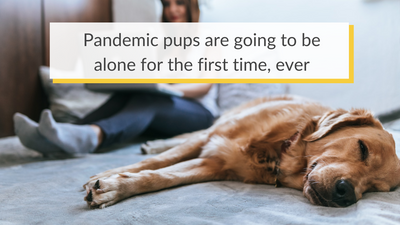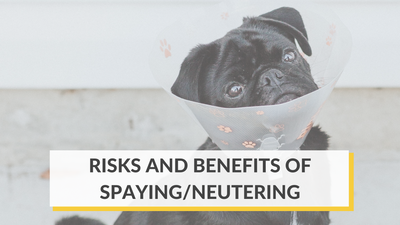Do you know the cues that indicate your dog may be uncomfortable or in pain? You’re probably familiar with a lot of your furbaby’s cues, like whining or growling. But our dogs have a larger body language vocabulary than that, it turns out.
Here are the top five things to pay special attention to, so you understand when your pup’s trying to tell you they need help.

- Breathing changes: Yep, panting indicates that your dog is feeling hot, but it can also indicate pain. If it’s prolonged and the dog appears anxious, check for wounds and call your vet. And if your dog is breathing laboriously, get them to the vet ASAP.
- Excessive sleep or insomnia: If your pup is suddenly sleeping much more than usual, they may be avoiding movement due to bodily pain or because they have unhealed illness. And if they begin having other chronic sleep issues, like being up all night, it may be too uncomfortable for them to lie down. This discomfort may be an internal injury, so they need care even if you can’t find a wound.
- Excessive licking: Your dog may love looking good, and take lots of time to groom themselves. But take note of their baseline, because if they begin licking a specific area more than usual, that may be an unseen wound they’re licking. The licking is an act of self-soothing, so be sure you check for external cuts and get your pup a doctor’s care if you can’t see anything.
- Touch sensitivity: If your pup suddenly becomes sensitive to your touch, this is likely a sign of discomfort. The cause may be easily addressed, like dry skin, or a more systemic issue, like the onset of arthritis. Be careful of your dog’s capacity to be petted, and gently touch other parts of their body to see if they’re all equally sensitive - this will help you figure out if there’s a localized wound or systemic problem.
- Changes in temperament: When a previously friendly pup becomes regularly grumpy, or even begins growling without clear reason, this could be a sign they’re in pain. Just as our moods change when we’re sick, your pup’s may too. It can be a good idea to videotape the changes to take to your vet if needed, since a dog’s behavior in the exam room is never the same as at home.

Above all, stay in touch with your dog! Dogs communicate to us the best they can, and we owe it to them to learn their language, verbal and non-verbal. After all, if they’re willing to learn “sit,” learning their “words” is the least we can do for our beloved pups.












